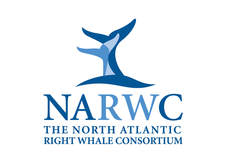Mandate
What is the problem?
- Around 350 North Atlantic right whales remain.
- Calving rates during the 2000’s averaged 24 calves per year, but recently calving rates have decreased by 44%.
- The population has been in decline since 2010.
- Right Whale coastal habitat along the eastern U.S. and Canada is heavily industrialized and under increasing negative pressures from human activities.
- Mortality from ship-strikes and fishing-gear entanglements is driving the species toward extinction.
What actions must be taken to effect the solutions?
Eliminate human-caused mortality to right whales in critical habitats and migration corridors
1. Reduce and eliminate mortality and injury from entanglements and ship-strikes via:
2. Protect right whale habitats
3. Assess factors that reduce reproductive success of right whales
1. Reduce and eliminate mortality and injury from entanglements and ship-strikes via:
- Reduce and eliminate mortality and injury from fishing-gear entanglements via:
- Use of reduced breaking strength ropes
- Development and implementation of buoyless fishing
- Ship rerouting around critical areas
- Ship speed reduction to "whale safe" speeds
- Advanced technology to help ships avoid right whales
2. Protect right whale habitats
- Assess patterns of known critical habitat use by right whales and humans and eliminate conflict
- Locate the other critical habitats not yet identified but known to exist
- Protect critical habitats using a range of tools (including some of the means identified above)
- Advance effective protection of known habitats and protect other habitats as they become known.
3. Assess factors that reduce reproductive success of right whales
- Identify and assess actual and potential threats in right whale habitats that reduce reproductive success
- Reduce and eliminate threats as they become identified
Essential resources and tools
- Information based on credible science that can address uncertainties
- International and national leadership, coordination and cooperation
- Political will at all jurisdictional levels
- Multi-year continuity in funding for research, monitoring and stewardship to capitalize on insights and advance policy and conservation initiatives
- Public and private partnerships, stakeholder and institutional commitment
- Education






